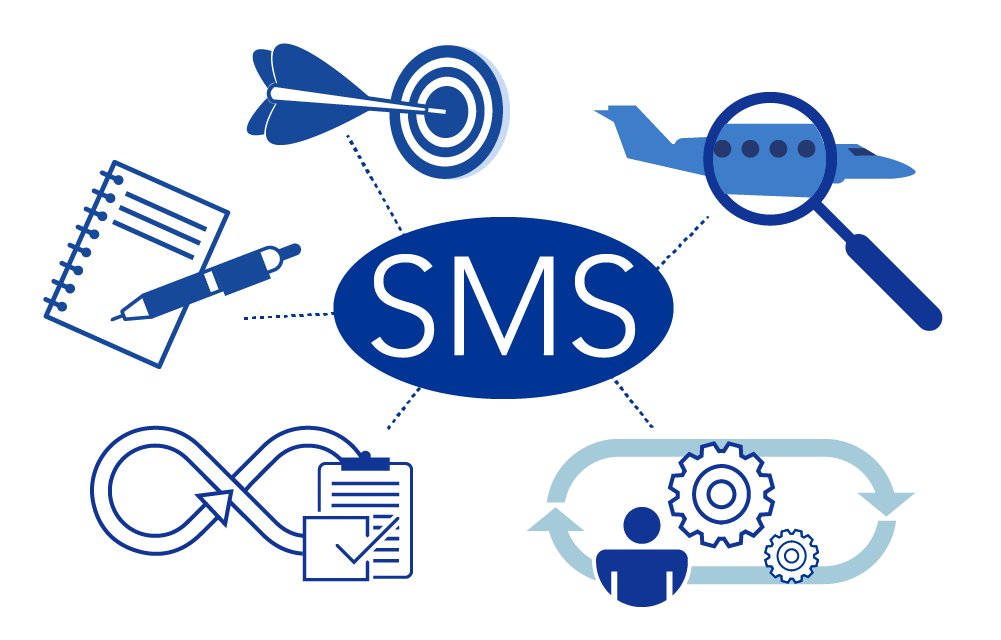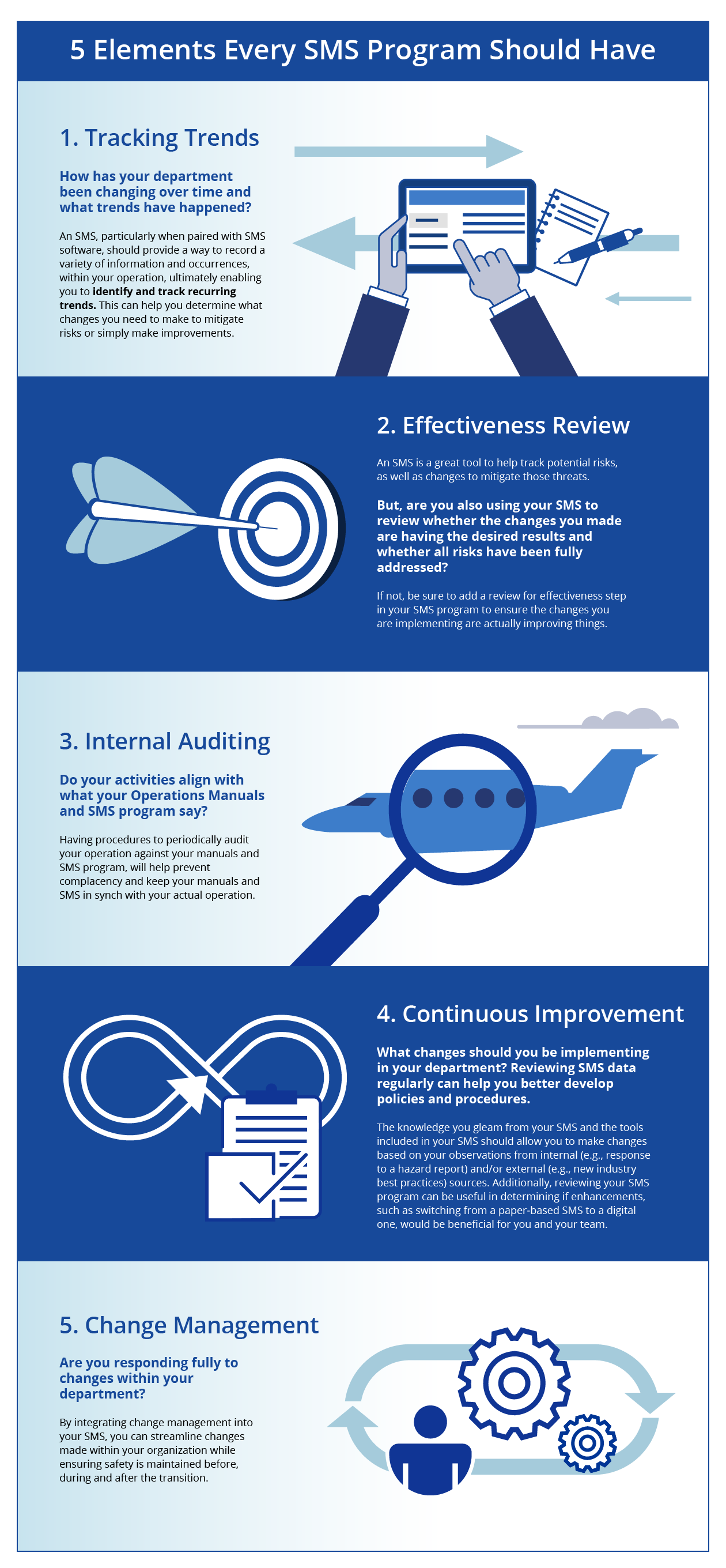5 elements every SMS program should have

October 16, 2018

1. Tracking Trends
How has your department been changing over time and what trends have happened?
An SMS, particularly when paired with SMS software, should provide a way to record a variety of information and occurrences, within your operation, ultimately enabling you to identify and track recurring trends. This can help you determine what changes you need to make to mitigate risks or simply make improvements.
2. Effectiveness Review
An SMS is a great tool to help track potential risks, as well as changes to mitigate those threats.
But, are you also using your SMS to review whether the changes you made are having the desired results and whether all risks have been fully addressed?
If not, be sure to add a review for effectiveness step in your SMS program to ensure the changes you are implementing are actually improving things.
3. Internal Auditing
Do your activities align with what your Operations Manuals and SMS program say?
Having procedures to periodically audit your operation against your manuals and SMS program, will help prevent complacency and keep your manuals and SMS in synch with your actual operation.
4. Continuous Improvement
What changes should you be implementing in your department? Reviewing SMS data regularly can help you better develop policies and procedures.
The knowledge you gleam from your SMS and the tools included in your SMS should allow you to make changes based on your observations from internal (e.g., response to a hazard report) and/or external (e.g., new industry best practices) sources. Additionally, reviewing your SMS program can be useful in determining if enhancements, such as switching from a paper-based SMS to a digital one, would be beneficial for you and your team.
5. Change Management
Are you responding fully to changes within your department?
By integrating change management into your SMS, you can streamline changes made within your organization while ensuring safety is maintained before, during and after the transition.


